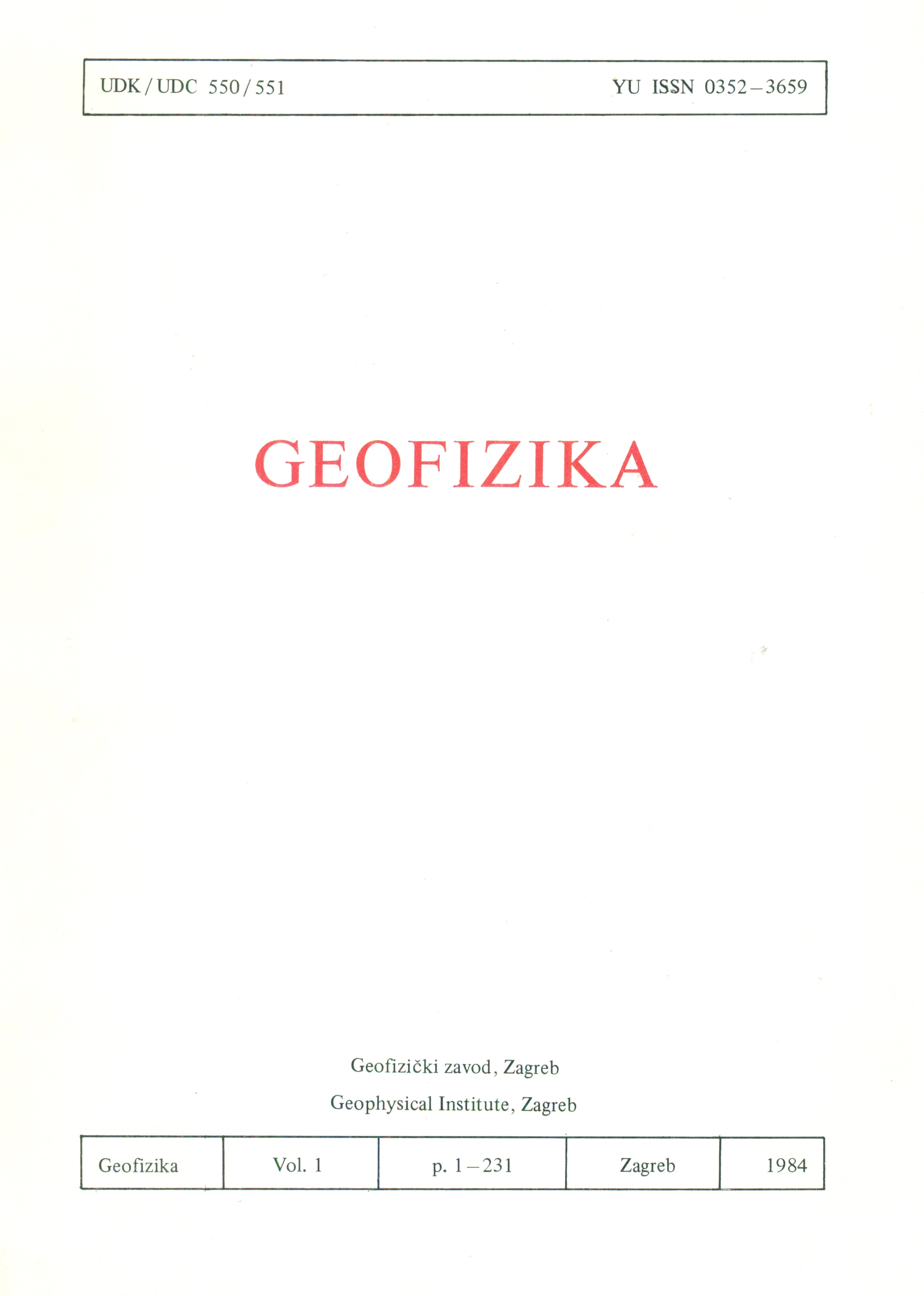Global radiation in Yugoslavia for a Rayleigh atmosphere model
(in Croatian)
Abstract
The paper deals with ground values of incoming Solar energy in the 41° – 47°N zone and in the 0 – 3000 metre altitude range, on the assumption of Rayleigh atmosphere model. The analysis is based on daily global radiation. A comparison with measured data shows that daily radiation for Rayleigh atmosphere model as a rule exceed that of real daily radiation near the ground, especially at little altitudes. The radiation for a Rayleigh model can be exceeded only rarely, in the case of relatively clear and dry air and strong reflection on suitable situated clouds or on fresh snow. Rayleigh atmosphere over Yugoslavia transmits 82 – 93% energy to the ground. In spite of great transmissibility, this model still influences the position of moving radiation maximum in summer, reaching 43°34’N at the upper level of the atmosphere, and not above 41°N at the sea level. The essential difference between the territorial distribution of global radiation over Yugoslavia for Rayleigh atmosphere and the known distributions derived from sunshine duration and from cloudiness is in the fact that radiation isolines in the model mostly follow the parallels of latitude, and radiation isolines for a real atmosphere follow the direction of the coastline, i.e. the highest mountain ranges. The other essential difference is in the mountains. The higher the mountains, the greater the energy coming through dry clean atmosphere. Due to orographic cloudiness, global radiation in real atmosphere is less intensive in the mountain areas of Yugoslavia than over the Adriatic basin and the Pannonian plain.
Downloads
Published
Issue
Section
License
Copyright (c) 2021 Geofizika journal

This work is licensed under a Creative Commons Attribution-NonCommercial 4.0 International License.

